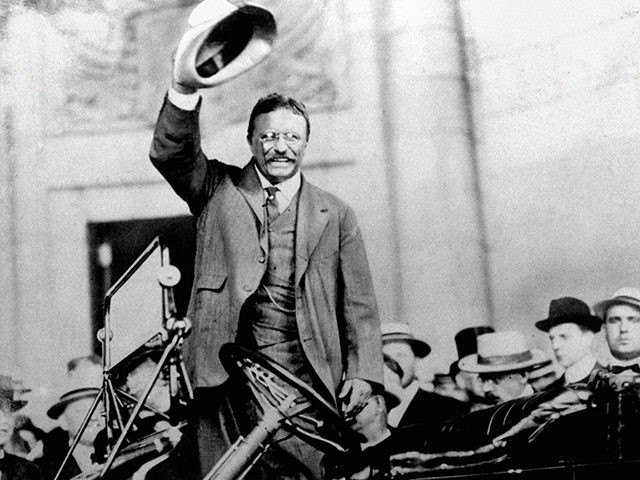More than 100 artists and academics call on the city of New York to censor public art memorializing figures they dislike.
The petition sent to the Mayoral Advisory Commission on City Art, Monuments, and Markers cited the Big Apple’s professed “tolerance and equity” in justifying the censorship. The signatories include members of the faculty of Harvard, Yale, and Princeton, as well as CUNY, Barnard, NYU, and other schools located in the city. The statues the group seeks to remove include ones of Christopher Columbus and Theodore Roosevelt.
The letter singles out a memorial of Roosevelt outside the American Museum of Natural History as deserving of removal. The artists and academics describe it as “not simply a free-standing statue of the 26th President, but rather a grouping of figures: Roosevelt on horseback, flanked by subordinate figures on foot, one Black (African by appearance) and the other Indigenous (in a stereotypical Native American cast but with an especially inappropriate mix of headdress and clothing).”
This depiction, the petition’s signers claim, represents “Roosevelt’s views on racial hierarchy.”
Regarding Columbus, the group dismisses concerns by Italian-Americans and advances dubious charges of genocide against the explorer, maintaining that “the public claim of ‘ownership’ of Columbus by Italian-Americans cannot be allowed to override his key role in the historical genocide of Indigenous peoples of the Americas. By 1600, at least 50 million Indigenous people died in this hemisphere as a result of the Columbian encounter with Europeans, whether from war, disease or enslavement.”
The group wants Columbus erased from Columbus Circle. “Many U.S. cities have chosen to do what is just and renamed Columbus Day as Indigenous Peoples’ Day,” they hold. “There is now a national movement to remove statues of Columbus parallel to the movement to remove Confederate monuments in the South.”
Apart from Roosevelt once calling the city home and coming in third place in a run for the office Bill de Blasio currently holds, the museum owes its existence in part to Roosevelt’s father, who helped found it. The museum aided Roosevelt in organizing his River of Doubt expedition and counts among its collections numerous specimens donated by the president, including two elephants felled on Roosevelt’s post-presidency African safari.
Columbus, who holds far more tenuous ties to a place he never stepped foot in, nevertheless remains a revered figure, particularly among the city’s many Italian Americans, for discovering the Americas. Most estimates place the population of the New World at the time Columbus encountered the natives as far less than 50 million, the number of lives the artists and academics lay at the foot of Columbus in charging him with “genocide.”
Though Roosevelt and Columbus made the censorship index, Samuel Dickstein Plaza, named for a Soviet spy, on the Lower East Side, a street section honoring W.E.B. Du Bois, a man owning the strange distinction of praising both Nazi Germany and the Soviet Union on trips there, and a public school bearing the name of Stalin Peace Prize-winner Paul Robeson did not.
“The empty sites could be used as the subject for artistic competitions, as with London’s Fourth Plinth in Trafalgar Square,” the letter, shared last week, concludes. “In short, we see the outcome of the Commission not as destroying heritage, let alone the purported erasure of history, but as the beginning of an exciting new set of possibilities for public art and museums in New York City, one finally devoted to an inclusive and reparative vision of the difficult histories of settler colonialism and the Indigenous peoples of this land.”

COMMENTS
Please let us know if you're having issues with commenting.